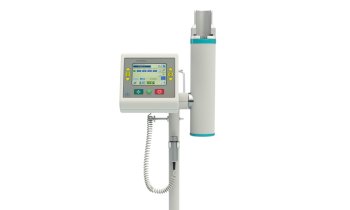New approach to reduce dose
GE Healthcare is highlighting advanced solutions that drive the efficiency of diagnostic imaging at the European Congress of Radiology (ECR), 2010. Complementing the company’s ‘healthymagination’ initiative of reducing healthcare costs through timely care, GE Healthcare is highlighting a range of Computed Tomography (CT) imaging solutions including Adaptive Statistical Iterative Reconstruction (ASIR), Gemstone Spectral Imaging (GSI) and Advantage Workstation VolumeShare 4.
Technological advances in medical imaging have been considerable and choosing these examinations has become standard for the diagnosis and treatment of patients with all types of pathologies. With increasing number of examinations, the number of patients exposed to x-rays to obtain the needed diagnostic information has been increasing. Radiologists around the world have higher awareness of the potential risks associated with these procedures and several training and control initiatives were launched over the last few years. Dose reduction has been and continues to be the priority for manufacturers in the medical imaging
sector.
Setting new image clarity standards for CT scanners
GE engineers discovered that, by changing the molecular structure of garnet stones, they could develop a scintillator capable of operating 100 times faster than conventional models, which enables Spectral and high definition imaging with up to 33% greater detail for whole-body studies, and up to 47% greater detail for cardiovascular studies. As a result, they created and patented the GE Gemstone Detector, the fastest detector on the market.
Low dose across applications
Most important to physicians and their patients, the remarkable image clarity of the Discovery CT750 HD is obtained without increasing dose. Sustaining its investments in Low Dose Technology Innovations, GE Healthcare introduced ASIR (Adaptive Statistical Iterative Reconstruction), a breakthrough reconstruction algorithm that enables up to 50% dose reduction for across all body regions, while preserving image quality with the Gemstone technology.
While all patients will benefit from lower dose exams, this new technology is specifically important for more sensitive populations, such as children. It also brings benefits to cardiac procedures, where dose reduction can reach 83% with SnapShot pulse. More than 200 GE CT in the world are using today ASiR in their daily practice, 500,000 patients were already scanned taking advantage of this new technology.
"Our ’healthymagination’ strategy aims to develop innovative solutions, for the purpose of improving the quality of healthcare, reducing the cost of patient treatment, and increasing access to healthcare for the many. With our latest generation CT scanners, the x-ray dose delivered to the patients can be reduced considerably. ”These exciting new technologies are important tools to help physicians keep CT dose as low as reasonably achievable", concluded Didier Deltort, CT General Manager, GE Healthcare, Europe, Middle East and Africa.
Gemstone Spectral Imaging (GSI)
Characterising soft tissues with conventional CT procedures may be more challenging for small lesions and can lead to delays in obtaining an accurate diagnosis as well as additional costs. GSI acquisition is a novel approach, which can enhance the diagnostic information of CT for soft tissues. and other exams to help clinicians characterised more confidently.
"Gemstone Spectral Imaging (GSI) helps us to differentiate enhancing vs. non-enhancing lesions on contrast-enhanced exams.
We also use the new GSI Monochromatic images to reduce artifacts around surgery clips and prosthesis, allowing us to assess vessel patency around the surgery clip or to evaluate the metal-to-bone interfaces for loosening on very dense prosthesis. We believe that these capabilities may open new applications in post-surgery and orthopaedic imaging, which are growing care areas in the next years.” said Dr.Barrau, Abdominal Radiologist, Centre Cardiologique du Nord, Saint-Denis, France.
Advantage Workstation VolumeShare 4
The more information an interventional radiologist has about the anatomy of the area to be treated, the more quickly a plan can be made to treat disease, with the least amount of damage to surrounding anatomy. The Advantage Workstation VolumeShare 4 with new multi-modality Image Registration capabilities makes it practical to overlay and match existing 3D images from different modalities, providing complementary information to plan and guide interventional procedure.
GE Healthcare’s Advantage Workstation VolumeShare 4 serves as an option for its multi-modality Advantage Workstation. The VolumeShare 4 multi-modality volume viewer software integrates 3D images from GE’s Innova interventional imaging system, as well as CT, MR, PET and PET/CT datasets to support new interventional visualization functions and analysis that are targeted for planning and navigation during image-guided interventional therapies, as well as monitoring the procedure results.
07.03.2010










